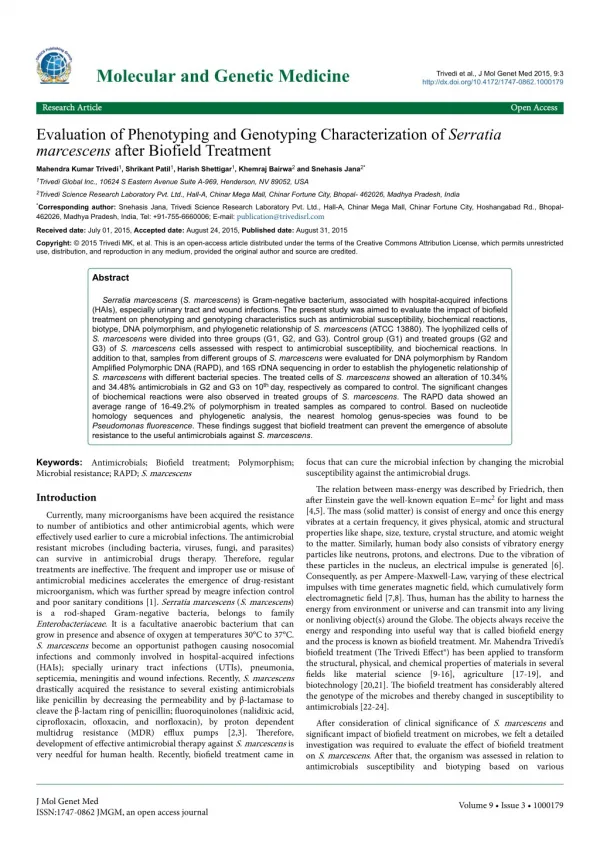Trivedi Effect - Evaluation of Phenotyping and Genotyping Characterization of Serratia marcescens after Biofield Treatme
Serratia marcescens (S. marcescens) is Gram-negative bacterium, associated with hospital-acquired infections (HAIs), especially urinary tract and wound infections. The present study was aimed to evaluate the impact of biofield treatment on phenotyping and genotyping characteristics such as antimicrobial susceptibility, biochemical reactions, biotype, DNA polymorphism, and phylogenetic relationship of S. marcescens (ATCC 13880). The lyophilized cells of S. marcescenswere divided into three groups (G1, G2, and G3). Control group (G1) and treated groups (G2 and G3) of S. marcescenscells assessed with respect to antimicrobial susceptibility, and biochemical reactions. In addition to that, samples from different groups of S. marcescens were evaluated for DNA polymorphism by Random Amplified Polymorphic DNA (RAPD), and 16S rDNA sequencing in order to establish the phylogenetic relationship of S. marcescens with different bacterial species. The treated cells of S. marcescens showed an alteration of 10.34% and 34.48% antimicrobials in G2 and G3 on 10th day, respectively as compared to control. The significant changes of biochemical reactions were also observed in treated groups of S. marcescens. The RAPD data showed an average range of 16-49.2% of polymorphism in treated samples as compared to control. Based on nucleotide homology sequences and phylogenetic analysis, the nearest homolog genus-species was found to be Pseudomonas fluorescence. These findings suggest that biofield treatment can prevent the emergence of absolute resistance to the useful antimicrobials against S. marcescens. | Authors: Mahendra Trivedi, Dahryn Trivedi, Alice Branton, Gopal Nayak
★
★
★
★
★
113 views • 7 slides














